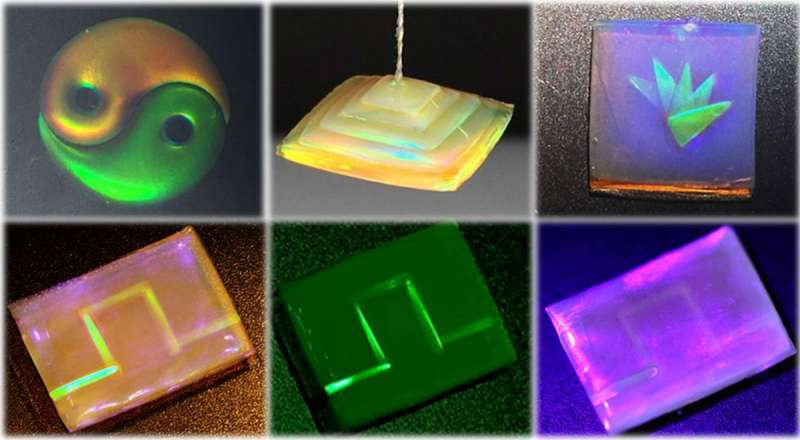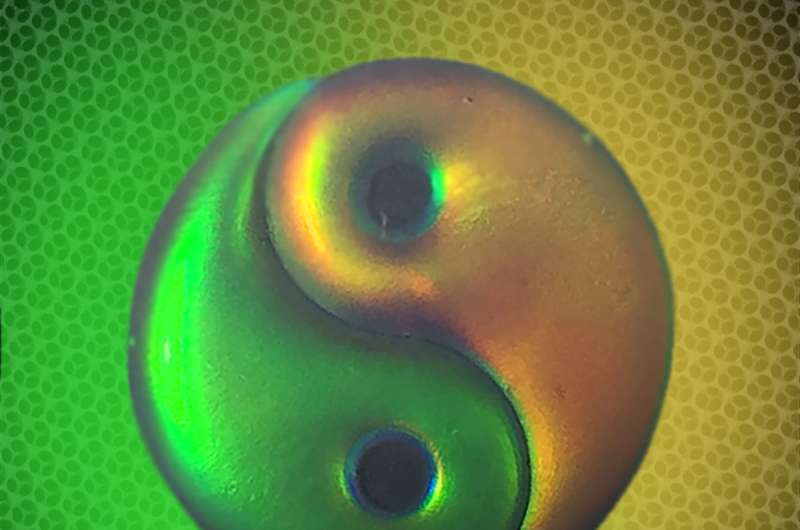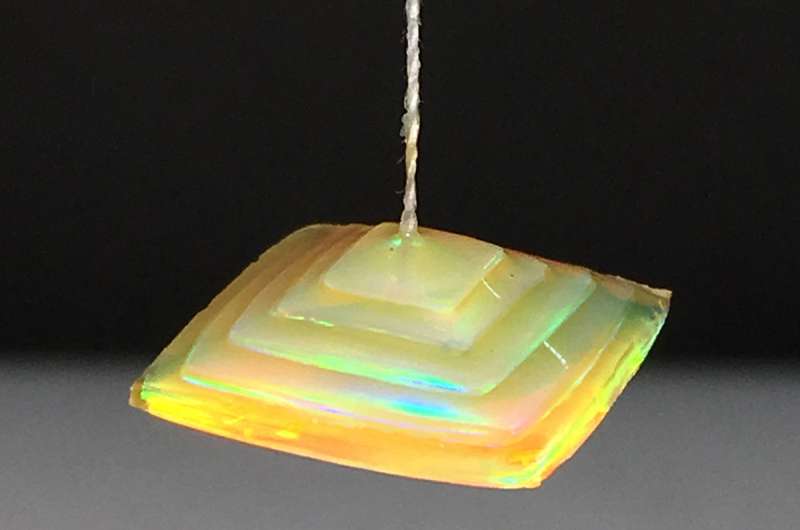May 23, 2017 report
A self-healing structural color hydrogel inspired by nature

(Phys.org)—A team of researchers at Southeast University in China has developed a self-healing structural hydrogel with a wide variety of applications. In their paper published in Proceedings of the National Academy of Sciences, the group describes their hydrogel and how it was inspired by healing they observed in animals.
It has been noted for several years that one area where humanoid robots are lacking is skin tone—most robots have a pasty white complexion, which is both disturbing and likely to lead to social problems once robots become mainstream. Most artificial skin is not able to heal itself, which means that robots need skin replacement if it gets damaged or accidentally colored in undesirable ways. There is also the issue of colors fading. When materials such as rubbers or plastics are colored, it is generally done through the use of pigments, which, like clothes, tend to fade over time.
For that reason, robot scientists would like to use other types of coloring options, one of which is structural colors—materials that have their color due to surface nanostructures rather than pigments. As an example, animals such as birds and fish are immune to fading due to structural coloring on scales and feathers. The problem with using such coloring, the researchers note, has been figuring out how to make them strong enough to handle real-world problems like running into things. In this new effort, the researchers report that they looked to nature to overcome this problem.

The new hydrogel they developed is actually double layered—one layer holds the structural colors, the other offers self-healing. When the hydrogel is cut into two pieces, it can not only heal itself, it maintains the original color while doing so. The end result, the team reports, is a very tiny scar. The group has conducted extensive testing of the material and has found that it is capable of withstanding real-world conditions.
It is not yet clear if the material could actually be used as a robot skin, but the researchers suggest it could be used for many different applications.

More information: Fanfan Fu et al. Bio-inspired self-healing structural color hydrogel, Proceedings of the National Academy of Sciences (2017). DOI: 10.1073/pnas.1703616114
Abstract
Biologically inspired self-healing structural color hydrogels were developed by adding a glucose oxidase (GOX)- and catalase (CAT)-filled glutaraldehyde cross-linked BSA hydrogel into methacrylated gelatin (GelMA) inverse opal scaffolds. The composite hydrogel materials with the polymerized GelMA scaffold could maintain the stability of an inverse opal structure and its resultant structural colors, whereas the protein hydrogel filler could impart self-healing capability through the reversible covalent attachment of glutaraldehyde to lysine residues of BSA and enzyme additives. A series of unprecedented structural color materials could be created by assembling and healing the elements of the composite hydrogel. In addition, as both the GelMA and the protein hydrogels were derived from organisms, the composite materials presented high biocompatibility and plasticity. These features of self-healing structural color hydrogels make them excellent functional materials for different applications.
Journal information: Proceedings of the National Academy of Sciences
© 2017 Phys.org



















